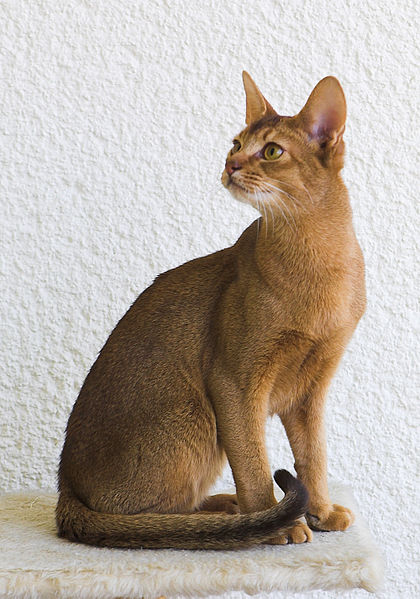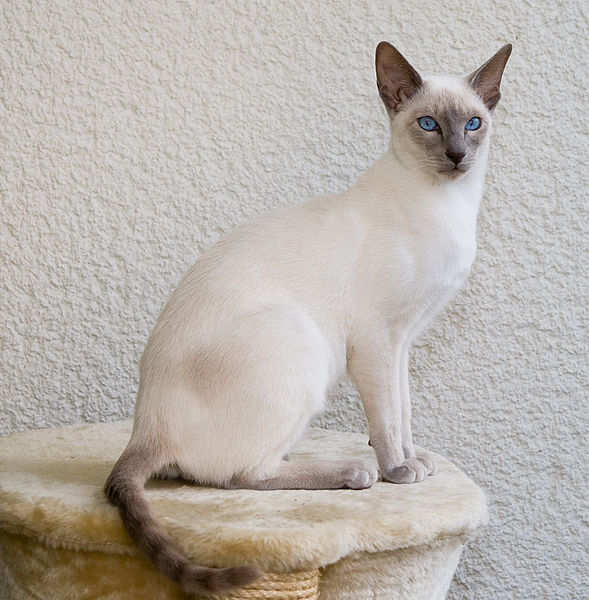A domestic long-haired cat is a cat of mixed ancestry – thus not belonging to any particular recognized cat breed – possessing a coat of semi-long to long fur. Domestic long-haired cats should not be confused with the British Longhair, American Longhair, or other breeds with "Longhair" names, which are standardized breeds defined by various registries. Other generic terms are in British English, moggie and in American English alley cat. Domestic long-haired cats are the third most common type of cat in the United States.
A long-haired adult calico cat
A domestic long-haired tabby and white bicolor cat
This domestic long-haired cat appears to be of partial Persian ancestry, with a relatively flat nose and fine hair.
Semi Longhaired Ginger, Black and White Torbie
The cat, commonly referred to as the domestic cat or house cat, is a small domesticated carnivorous mammal. It is the only domesticated species of the family Felidae. Recent advances in archaeology and genetics have shown that the domestication of the cat occurred in the Near East around 7500 BC. It is commonly kept as a house pet and farm cat, but also ranges freely as a feral cat avoiding human contact. It is valued by humans for companionship and its ability to kill vermin. Its retractable claws are adapted to killing small prey like mice and rats. It has a strong, flexible body, quick reflexes, sharp teeth, and its night vision and sense of smell are well developed. It is a social species, but a solitary hunter and a crepuscular predator. Cat communication includes vocalizations like meowing, purring, trilling, hissing, growling, and grunting as well as cat body language. It can hear sounds too faint or too high in frequency for human ears, such as those made by small mammals. It also secretes and perceives pheromones.

Image: Cat August 2010 4
Image: Gustav chocolate
Image: Orange tabby cat sitting on fallen leaves Hisashi 01A
Image: Siam lilacpoint








